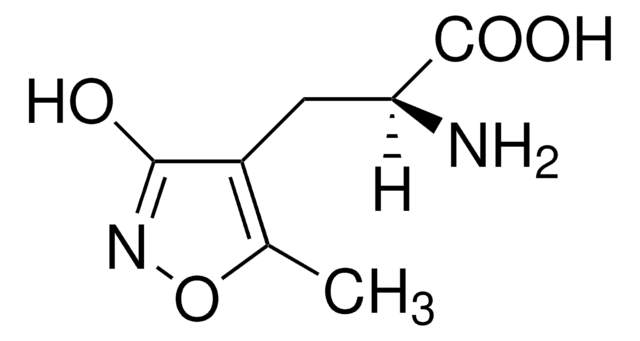C9847
Cyclothiazide
Synonim(y):
6-Chloro-3,4-dihydro-3-(2-norbornen-5-yl)-2H-1,2-4-benzothiadiazine-7-sulfonamide 1,1-dioxide
About This Item
Polecane produkty
Postać
powder
Poziom jakości
inicjator
Eli Lilly
temp. przechowywania
2-8°C
ciąg SMILES
[H][C@@]12CC(C3Nc4cc(Cl)c(cc4S(=O)(=O)N3)S(N)(=O)=O)[C@@]([H])(C1)C=C2
InChI
1S/C14H16ClN3O4S2/c15-10-5-11-13(6-12(10)23(16,19)20)24(21,22)18-14(17-11)9-4-7-1-2-8(9)3-7/h1-2,5-9,14,17-18H,3-4H2,(H2,16,19,20)/t7-,8+,9?,14?/m0/s1
Klucz InChI
BOCUKUHCLICSIY-QJWLJZLASA-N
informacje o genach
human ... CA1(759) , CA4(762) , GRIA1(2890) , GRIA2(2891) , GRIA3(2892) , GRIA4(2893)
rat ... Gria1(50592)
Szukasz podobnych produktów? Odwiedź Przewodnik dotyczący porównywania produktów
Opis ogólny
Zastosowanie
Działania biochem./fizjol.
Cechy i korzyści
Kod klasy składowania
11 - Combustible Solids
Klasa zagrożenia wodnego (WGK)
WGK 2
Temperatura zapłonu (°F)
Not applicable
Temperatura zapłonu (°C)
Not applicable
Środki ochrony indywidualnej
dust mask type N95 (US), Eyeshields, Gloves
Certyfikaty analizy (CoA)
Poszukaj Certyfikaty analizy (CoA), wpisując numer partii/serii produktów. Numery serii i partii można znaleźć na etykiecie produktu po słowach „seria” lub „partia”.
Masz już ten produkt?
Dokumenty związane z niedawno zakupionymi produktami zostały zamieszczone w Bibliotece dokumentów.
Produkty
DISCOVER Bioactive Small Molecules for Neuroscience
Nasz zespół naukowców ma doświadczenie we wszystkich obszarach badań, w tym w naukach przyrodniczych, materiałoznawstwie, syntezie chemicznej, chromatografii, analityce i wielu innych dziedzinach.
Skontaktuj się z zespołem ds. pomocy technicznej








